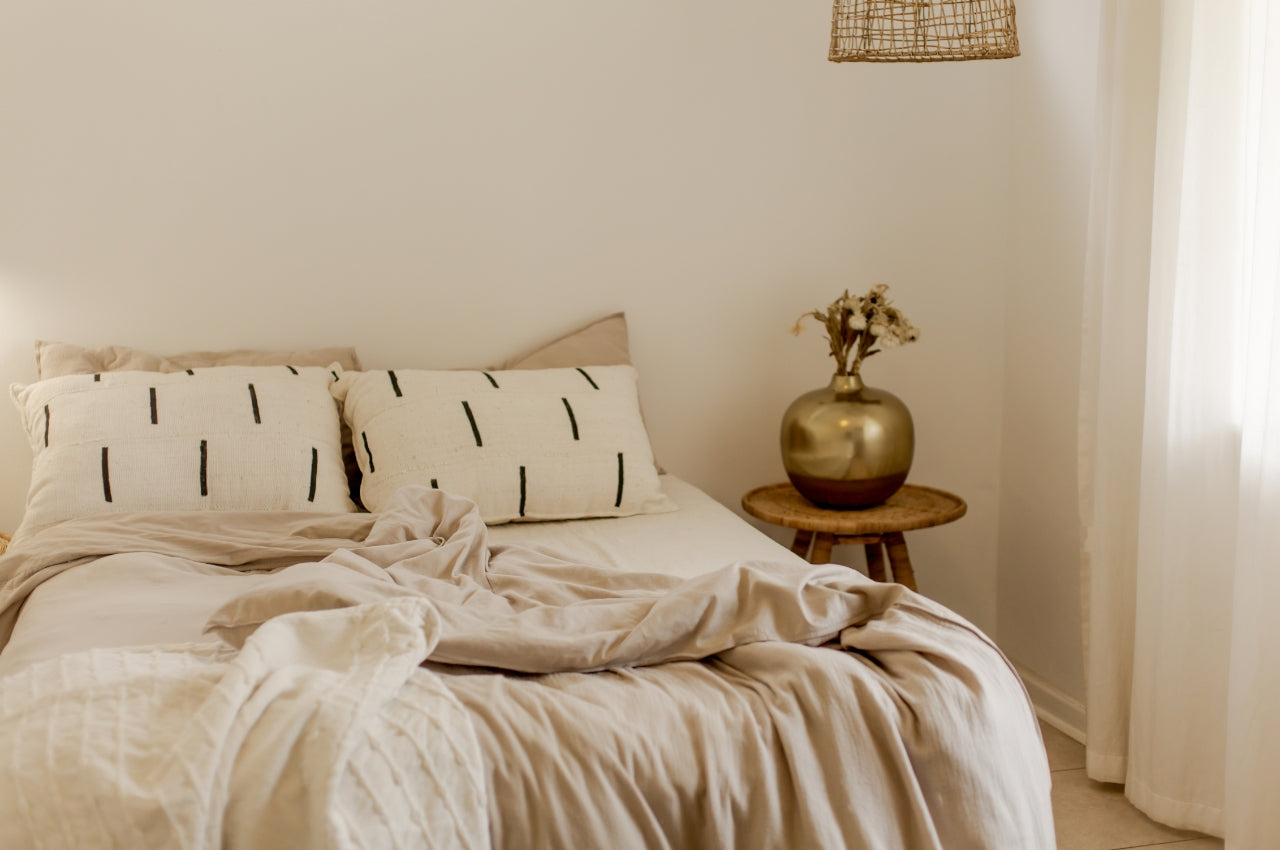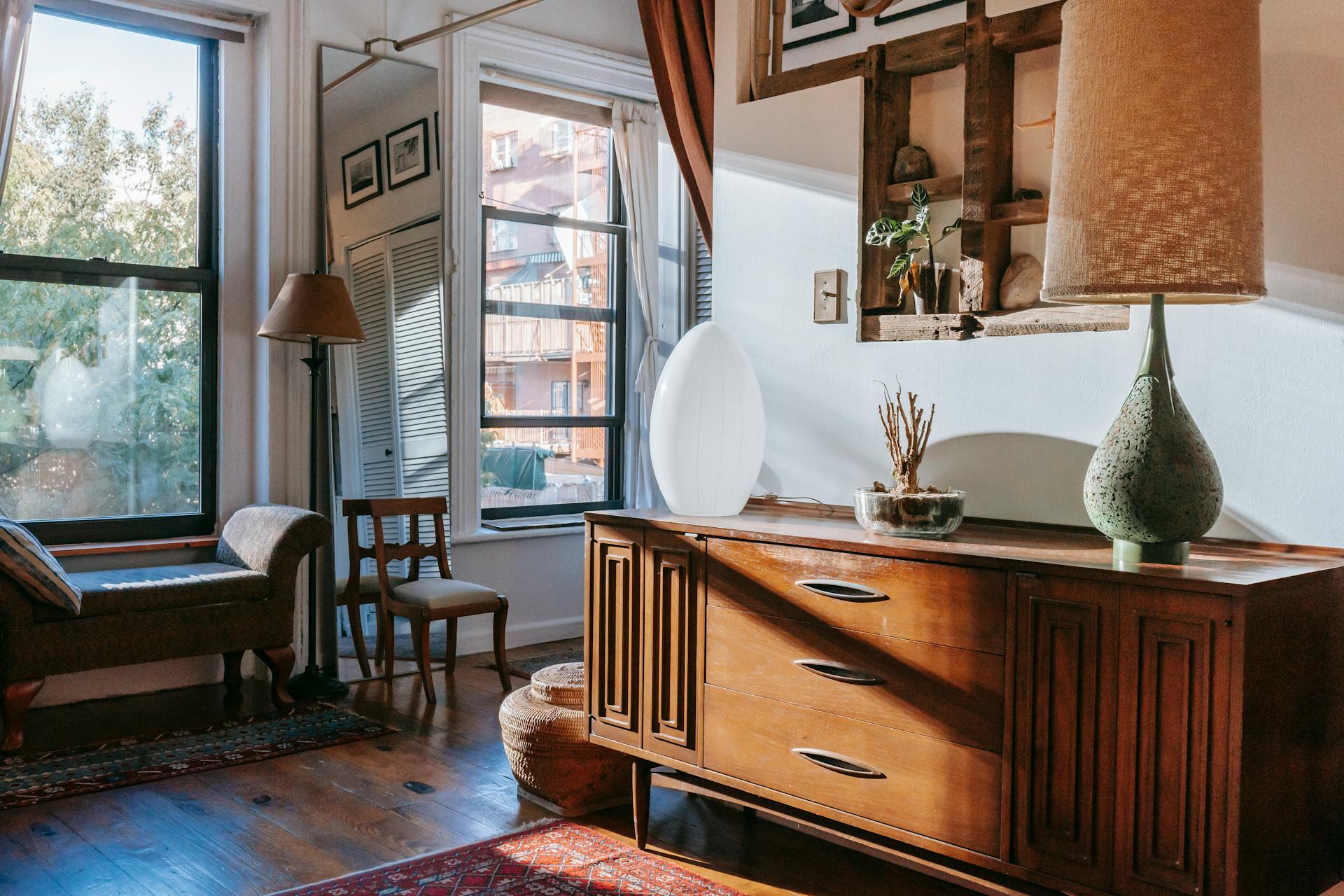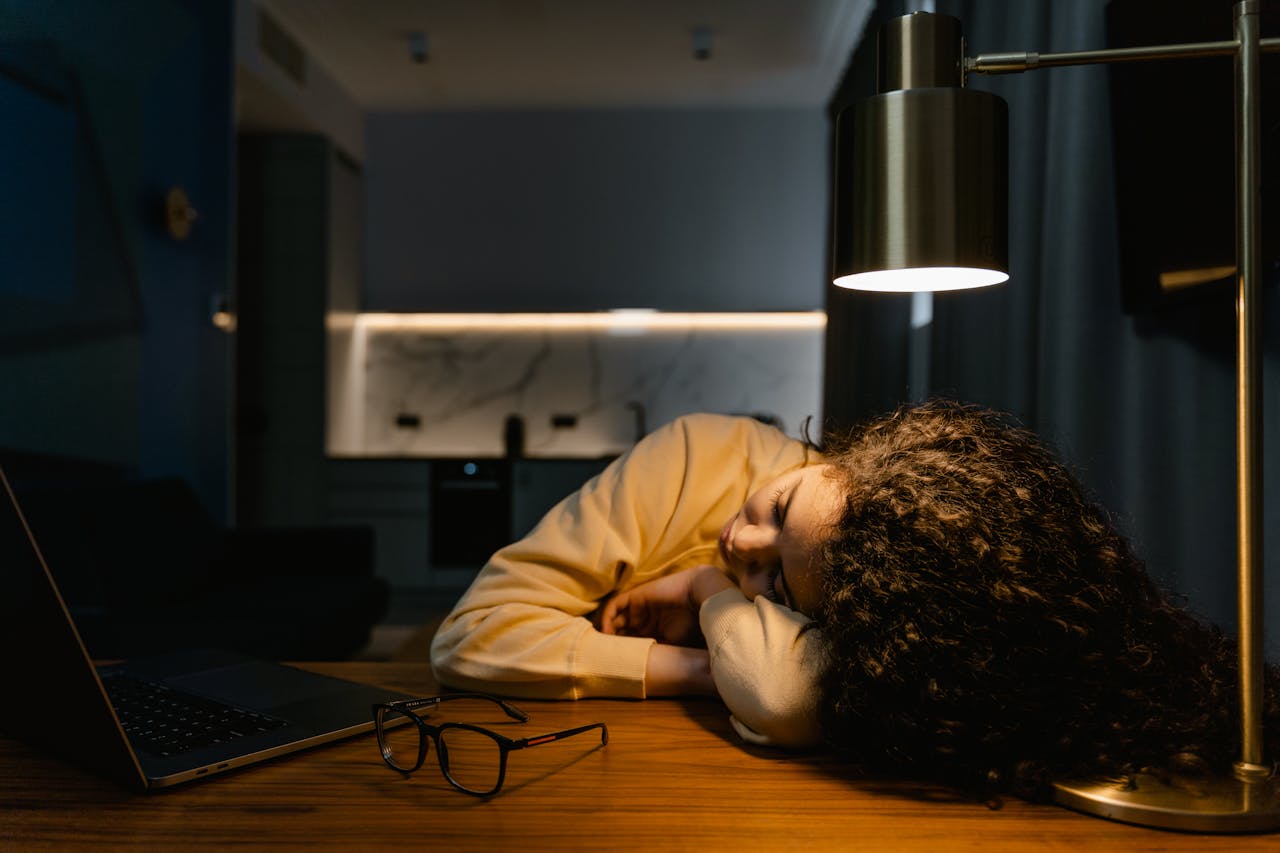The color palette can set the tone for how people feel in a space. This means your choice matters, and it makes sense to be a little particular when picking out interior colors and approach the process with more intention.
Choosing the bedroom colors is particularly significant because this is where you rest. Ideally, the bedroom is a relaxing and peaceful space that encourages you to unwind. Through colors, you can create this environment—visually, at least.
So, what are the best colors for sleep? What are the colors to avoid or use sparingly? Read on to find out.
The Link Between Bedroom Colors and Sleep
Research exploring the direct connection between color and sleep is limited. There are studies, however, that show how colors influence emotions.
The relationship between color and emotion is studied in a field known as color psychology, which examines how colors impact our feelings and behavior. For instance, the color blue has been shown to lower blood pressure and heart rate. In contrast, powerful pigments like red, orange, and yellow have a stimulating effect that promotes a more energetic and alert state.
Emotions, in turn, may play a key role in how well we sleep. The relationship between emotion and sleep may be bidirectional—the quality of sleep affects emotions, and emotions may affect the quality of sleep.
A paper seeking to establish the connection presented examples from various studies that offer some evidence of how interpersonal conflict may lead to restless sleep. One study showed how women going through divorce entered REM sleep faster but experienced less deep, restorative sleep compared to a control group.
Now, if colors influence our emotions, it may be possible that the colors we surround ourselves with might impact how easily we fall asleep and how restful that sleep becomes.
Calming Colors to Consider in the Bedroom
While there are no specific colors for sleep, certain hues do have a calming effect on people. Still, consider how emotional responses to particular colors vary, depending on culture and personal experiences.
-
Blue is reminiscent of clear skies or the sea, which many people find naturally relaxing. Studies even suggest that shades of the color blue can help lower blood pressure and heart rate. However, it's also worth noting that some people also associate blue with sadness.
-
Green is often associated with nature and balance—this is hardly a surprise. Surely, you must have noticed how being around plants feels relaxing and invigorating. Popular versions of the color include sage green, olive, and pistachio.


Featured: The Sunrise Bed Frame and the Enso Platform Bed from T.Y. Fine Furniture's Bedroom Collection
-
White, the classic neutral, provides a clean and airy feeling. While stark white can feel cold, warmer whites or off-whites create a cozy backdrop that’s easy on the eyes and pairs beautifully with natural textures like wood or linen.
-
Muted colors, such as beige and soft grays, offer a similar effect to white but with more warmth. They provide a neutral base that encourages relaxation and pairs well with other calming, lighter colors, such as pale blues or greens.
-
Light pink, like a soft blush or pastel pinks, suggests gentle tenderness. Color associations include joy, femininity, and healing.
Colors to Use Sparingly in the Bedroom
Rounding up a list with the label 'worst bedroom colors' can be unfair, considering that some of these colors might be someone else's favorite.
However, some colors can indeed feel overwhelming when used as the dominant color in a room. To create a relaxing bedroom, it may be better to use these colors sparingly or as accents.
Black, Deep Gray, Dark Purple
A dark environment is great for sleep, but being surrounded by deep colors on all walls can feel heavy, even claustrophobic. If you love the dramatic look of dark colors, consider using black, charcoal gray, or dark purple as an accent wall, flanked by lighter colors. Also, consider navy blue or a deep forest green if you want a dark accent without necessarily going for black.
Red, Yellow, and Orange
These warm, energetic colors are often linked with stimulation and excitement. While they can add a lively touch as accents, like pillows or art, they’re not exactly ideal for the main wall color, especially for a bedroom where calmness is encouraged. Opt for softer versions of these colors, such as peach or terracotta, to bring warmth to the space without overwhelming your senses.
Rich and Dark Browns
Rich browns can feel cozy, but too much can make a room feel gloomy and heavy. This doesn't mean you should avoid brown altogether. After all, this is the color of wood, and the material brings a natural beauty to spaces. But there is a need to balance. For instance, if the floors are dark hardwood, you can offset the tones with a light-colored rug with soft patterns.
Practice Better Sleep Hygiene
Even the most calming colors won’t fix poor sleep habits. To create a truly restful bedroom, pair your color choices with good sleep hygiene practices:
-
Limit screen time before bed. The blue light from phones, tablets, and TVs can disrupt your body’s natural sleep rhythm. So, avoid using gadgets at least 30 minutes before sleeping.
-
Switch to warm lighting in the evening. Soft, warm-toned lights create a cozy atmosphere and may help signal your body to wind down.
-
Control the light in your room. Darkness is crucial for good sleep. If the light outside is a problem, invest in blackout curtains or an eye mask, especially if you work late hours or sleep during the day.
-
Keep your sleep-wake routine consistent. Build a habit of winding down and waking up at the same hours every day to reinforce your internal clock.
Other Bedroom Tips to Consider
Another tip to consider, which isn't exactly part of your sleep hygiene, but can help make your environment more conducive. Explore feng shui for the bedroom. Some of these dos and don'ts are actually practical, as they focus on promoting good energy and security.
And, what are some of these tips? One, place the bed in the command position. This means the bed must face the door without being directly in line with it. Then, 'secure' your head by having a headboard on your bed, better yet, with a solid wall behind you.
There should also be space to walk around the bed, and it's better to avoid placing your bed under a window.
Choose the Best Bedroom Colors for You
While color psychology offers general insights, remember that your color preferences matter most. Culture, life experiences, and even memories can influence your emotional response to certain colors, only proving that color associations aren't universal. A shade that feels calming to one person might feel dull to you. And that's okay.
So, what's the best approach in choosing bedroom colors? First, discover the colors you resonate with, those that make you most at ease. Then, experiment. You can start small through bedding, curtains, or décor in different shades to see how they affect the room’s mood before fully committing to painting the walls.
Related Posts
- Simple Tips to Bring More Natural Light into Your Apartment
- How the Colors of Your Space Affect Your Mood
- Tips for Better Sleep: 8 Ways to Make Your Bedroom Fit for Sleep
Featured image by Shann Daniels from diversifylens via Canva



Leave a comment
This site is protected by hCaptcha and the hCaptcha Privacy Policy and Terms of Service apply.